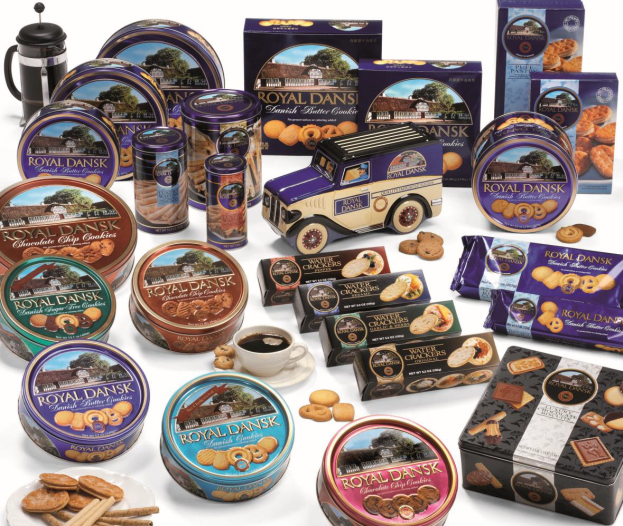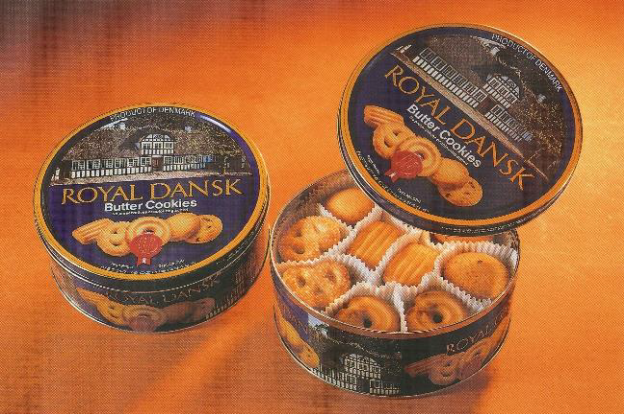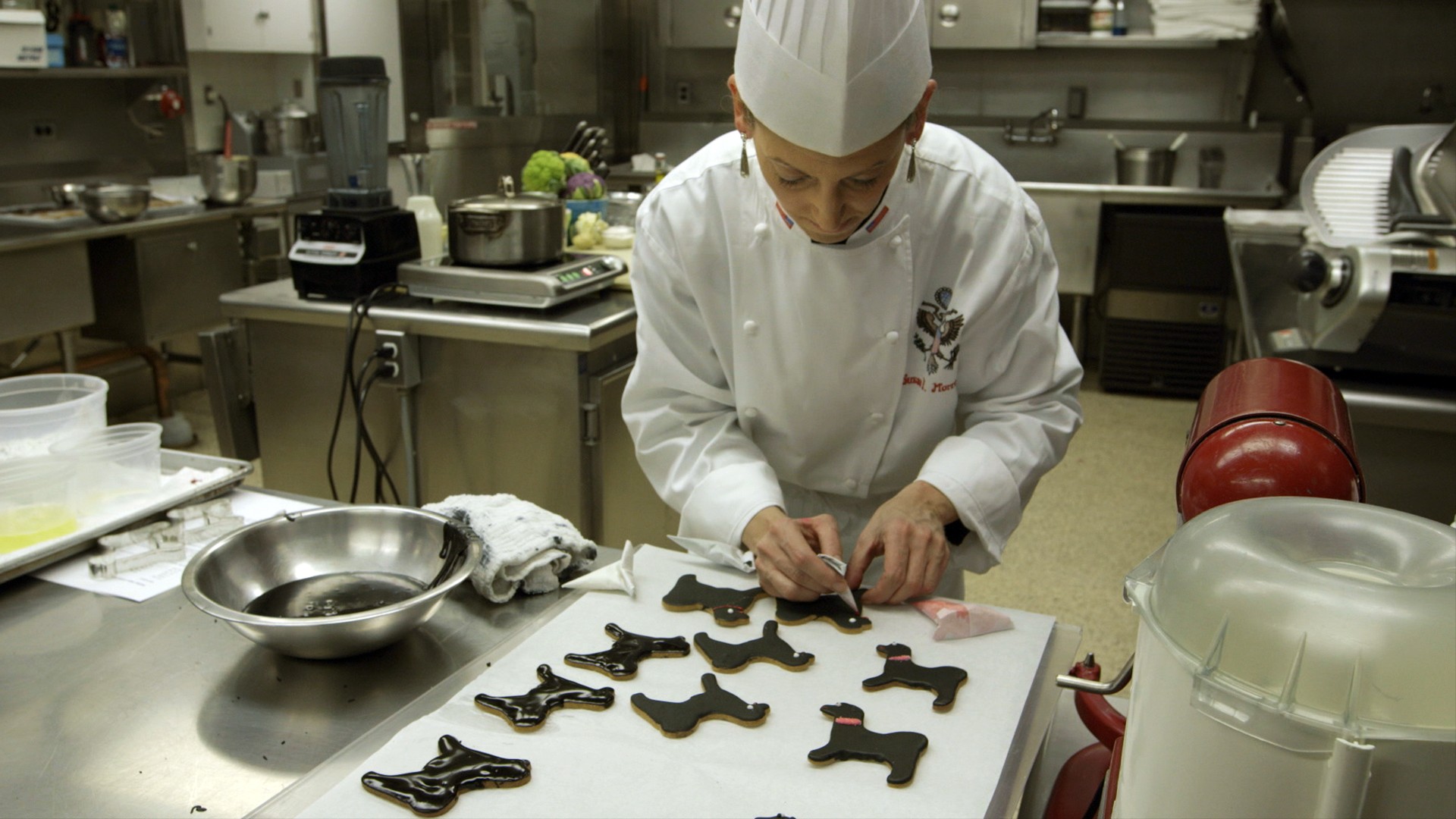Stella Parks’ love for Royal Dansk runs deep. When she was a child, her dad always brought a bright blue tin of the leavened, sweet butter cookies home after his last day of work in December. She took this as a yearly sign that the holidays had begun, and she’d practically inhale the cookies, some shaped like bows and topped with sprinkles, others bare. All were variations of the same basic thematic calculus: sugar and butter.
Advertisement
“They were so crunchy and simple, and luckily just sweet enough,” Parks tells me. “And the tin would smell like cookies long after the treats were gone.”You’ll find a copycat recipe for Royal Dansk in the pages of BraveTart: Iconic American Desserts, Parks’ wildly popular cookbook released this year. It’s a book that teaches you how to make recipes for trademarked confections—Milky Ways, Fig Newtons, and Nutter Butters—on your own and with confidence, giving logic to the flavors that seem almost illogically delicious.
The Royal Dansk tin today. Photo via Royal Dansk.
Parks created her recipe for her Royal Dansk clone cookies by accident one day, she explains. She was trying, and failing, to make a batch of facsimile Girl Scout Trefoils. Parks rolled the dough way too thick and over-baked it just a bit. This resulted in a rather disastrous batch of wannabe Trefoils, but the taste was freakishly close to that of Royal Dansk cookies. So she tried again, this time with the intention of making Royal Dansk cookies, using a cookie press and a lavish amount of sanding sugar to replicate that familiar flavor from her youth.It’s hard, after all, to emulate the particular sensation you get when eating Royal Dansk cookies, that rare mass-market product that toes the line between affordability and luxury. Affection for this product, sold in the thick of the holiday season, seems hardwired into America's arteries. It's no stretch to say these cookies are iconic, as are the royal blue tins they’re packaged inside. (More than a few of us repurpose these tins for sewing supplies and other utilities and trinkets when we're finished.)
Advertisement
The cookies are currently manufactured by Denmark-based company Kelsen, which, in turn, is the union of two different Danish bakeries that merged in 1990. The first, Kjeldsen, had opened in 1933, when a young, married couple named Anna and Marinus Kjeldsen opened a bakery in a small village in Denmark’s Jutland called Nørre Snede. The second, a cooperative factory in Helsingør called Royal Dansk, had sprouted up in 1966, hundreds of miles away. The two companies followed parallel trajectories of success, eventually expanding beyond Denmark.READ MORE: The Weird, Kind of Creepy Story Behind the Invention of Candy Canes

“Kjeldsens, as it was known, became popular in Hong Kong and later in China,” Jette Rasmussen, Royal Dansk's brand manager based in Denmark, explains to me. "Royal Dansk became a mainstay in Europe and the US.”Today, the cookie's tin bears the facade of an old Danish farmhouse named Hjemstavnsgaard, located on the island of Funen in Denmark. It's an image, Rasmussen claims, that first appeared on the Royal Dansk tins in the early 1970s, meant to evoke the richness of Denmark’s farming heritage.
“The farm has become a key part of the Royal Dansk brand from our beginning,” Rasmussen tells me. “We can only imagine that the baker back then appreciated the connection between the local farming heritage and the traditional cookies made with high-quality butter. While we can’t ask him directly, we still agree.”READ MORE: The Danish Butter Industry Would Like You to Know That Butter Is Bad for You
Advertisement
The tins are now found in convenience stores and supermarkets in every crevice of America. “Peoples’ first reaction to the question of Royal Dansk’s success?” Timothy Roufs, co-author of 2014’s Sweet Treats Around the World: An Encyclopedia of Food and Culture, co-written with his wife Kathleen, tells me. “It’s the blue tin, plus the quality.”

The Roufs live in Duluth, Minnesota, which they describe as somewhat provincial. Timothy notes that surrounding supermarkets and high-end, tourist-oriented specialty shops carry imitation brands, but not Royal Dansk. The only places that offer the original, iconic cookies are Walmart and Walgreens, where 12-ounce tins cost $4.99.The Roufs attribute the brand’s enduring popularity to both the quality of the product, which they claim is “exceptional,” along with the diligence with which its manufacturers have resisted the urge to add preservatives or coloring. The endurance of the Royal Dansk brand is also owed somewhat to America’s fetish with the concept of royalty, along with consumer fascination with an imagined, mythic Scandinavia where everything tastes better.But to them, there’s a more simple explanation for why this brand endures. It is a basic biological fact, the Roufs claim, ripping a page from Michael Moss’ Salt Sugar Fat: How the Food Giants Hooked Us: We are all born with a predisposition towards the taste of salt, sugar, and fat.


